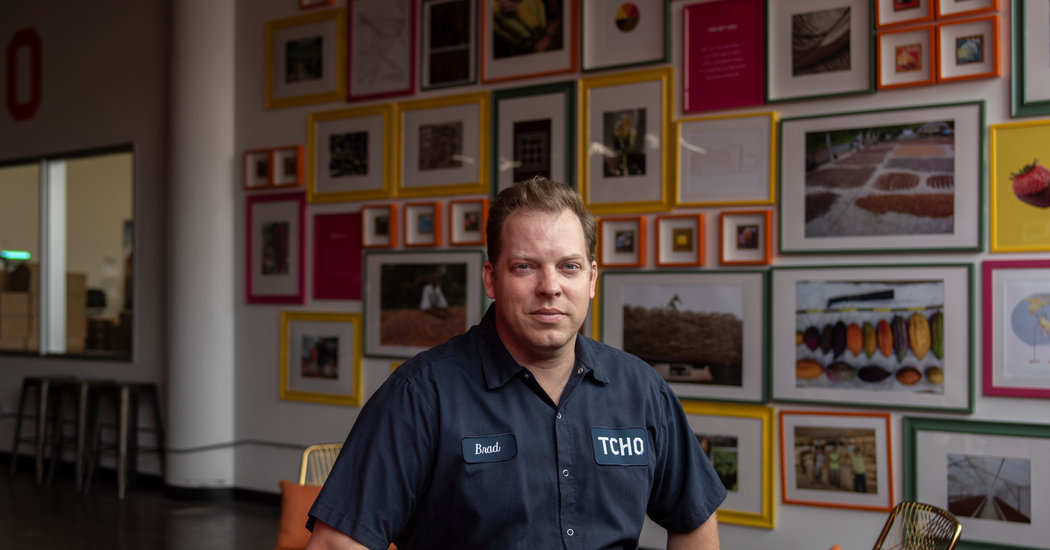
Brad Kintzer, 41, is the chief chocolate maker for Tcho Chocolate, in Berkeley, Calif.
What drew you into the world of chocolate making?
I’d been interested in plant life as an environmental studies major at the University of Vermont with a focus on botany. Experiencing New England winters for the first time convinced me I’d be happier doing field research about tropical plants. The cacao bean fascinated me from the first time I saw its tree in a greenhouse at the Montreal Botanical Gardens.
What did you find so fascinating?
From a botanical perspective, cacao is striking because its flowers and fruits grow right off the trunk of the tree. I was impressed that its evolution goes back 10 million years, defying all kinds of odds, overcoming weather extremes and disease in tropical regions of Central and South America.
Culturally, the pre-Columbian Aztecs considered it so valuable they used the beans as currency. It was also sacred to the Mayans and other Mesoamerican groups; it still holds a high place spiritually in many indigenous societies.
And its health benefits have been extolled anecdotally for many centuries; modern studies show the plant is rich in flavonols, chemicals that help lower blood pressure. Plus, it just tastes so good; there’s something incomparably decadent about chocolate.
What terms describe the tastes you’re looking for?
Chocolate sensory terminology is not yet as well developed as in the wine or coffee worlds, but there is wide flavor diversity and great complexity found in cacao. It’s fascinating to explore the abundant geographic flavor differences.
For example, West African beans produce the familiar deep, rich, fudge brownie taste, which is often simply described as chocolaty. Those from Ecuador are known for their floral notes. Peru’s tends to taste fruity and Venezuela’s are nuttier. Costa Rican beans are reminiscent of dried fruits. It’s fairly easy to agree on chocolate tastes to avoid: moldiness, smokiness, chemical flavors, excessive astringency and bitterness.
How does your company help farmers develop better tasting beans for chocolate?
Most farmers have never tasted the chocolate that comes from their land. One of our first tasks at Tcho was to provide our farmer partners with tools to make their own chocolate to sample from their own cacao beans, and a system to evaluate and improve the results.
We established 10 mini-chocolate flavor labs in four cacao-producing countries that could be operated easily and the results replicated. Our efforts in West Africa — which produces more than 70 percent of the world’s beans — and Latin America were both funded in part by the United States Agency for International Development.
Where does Tcho fit in the overall chocolate industry?
Chocolate retail sales in the United States reached an estimated $17.6 billion in 2016. With approximately $10 million in annual sales, we are a David in a Goliathan marketplace. While the majority are chocolatiers, meaning they buy already-made chocolate from manufacturers and package it under their own label, we are at the cutting edge of a growing trend of craft chocolate makers.
This means we, like others in this movement, create chocolate by focusing on all the steps that impact chocolate flavor, starting by using excellent cacao beans, optimally roasting and grinding the beans, molding the liquid from them and finally wrapping it into a finished chocolate bar.
Craft chocolate makers are passionate about spotlighting the array of pure flavors. At Tcho, we like to let loose and create fun combinations, like snickerdoodle, mint chip gelato, Blue Bottle craft coffee, banana nut and Earl Grey tea. In all, we’ve developed more than 15 chocolate bar flavors.
Aside from the technical side of your job, do you actually like chocolate?
I taste it every day and my love for it has grown deeper and richer, like a good marriage. My favorite flavor depends on my mood: Sometimes I like it unsweetened; at others I like dark chocolate blended with beans from Ghana, Peru, Madagascar and Ecuador.



